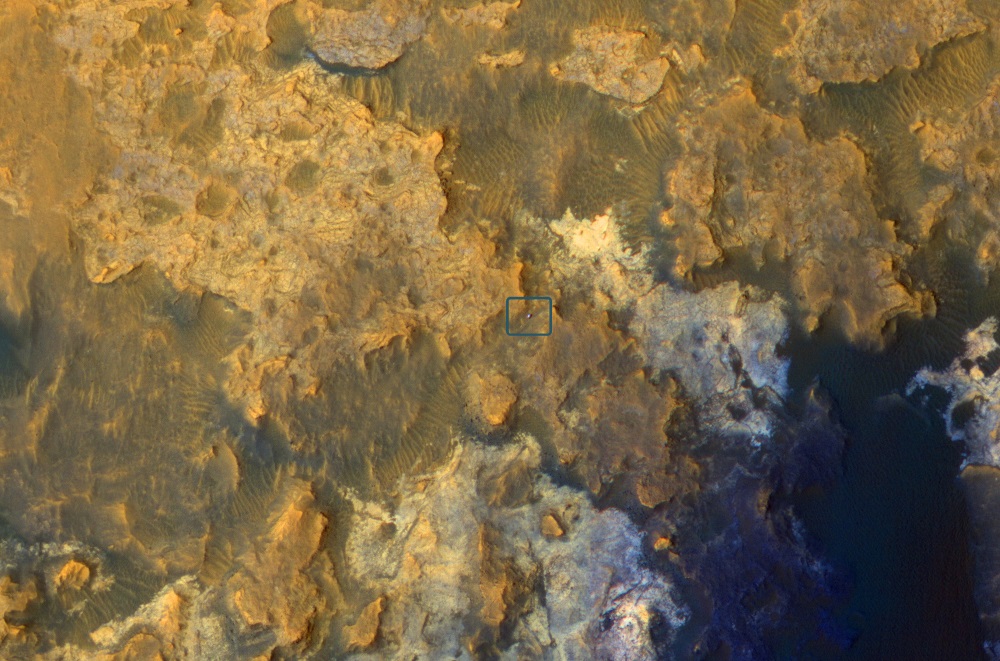
While the image above might, at first blush, appear irrelevant, the technological achievements it demonstrates are incredible.
The photo was captured by NASA’s Mars Reconnaissance Orbiter and the area marked out in the square in the Agency’s Curiosity Mars rover as it passes through a valley called “Artist’s Drive” on the lower slope of Mount Sharp.
In other words, we have a man-made satellite, capturing an image of a man-made rover on a planet that man has never stepped foot on.
All marveling aside, here are some details behind the capturing of this photo: the view covers an area about 550 yards across. The image was taken using the orbiter’s High Resolution Imaging Science Experiment (HiRISE) camera and it shows Curiosity’s position after a drive of roughly 75 feet during its 949th Martian day.
Curiosity is driving through Artist’s Drive on its way toward higher layers on Mount Sharp after having examined various exposures of the mountain’s basal geological unit at “Pahrump Hills.” Towards the bottom left of the image is “Logan’s Pass”—the science destination that Curiosity is trying to reach.
In terms of who contributed to these projects, the University of Arizona (Tucson) operates HiRISE, which was built by Ball Aerospace & Technologies Corp. NASA’s Jet Propulsion Laboratory, which is a division of the California Institute of Technology (Pasadena), manages the Mars Reconnaissance Orbiter Project, and Mars Science Laboratory Project for the Agency’s Science Mission Directorate in Washington.
Via NASA
Advertisement
Learn more about Nasa





